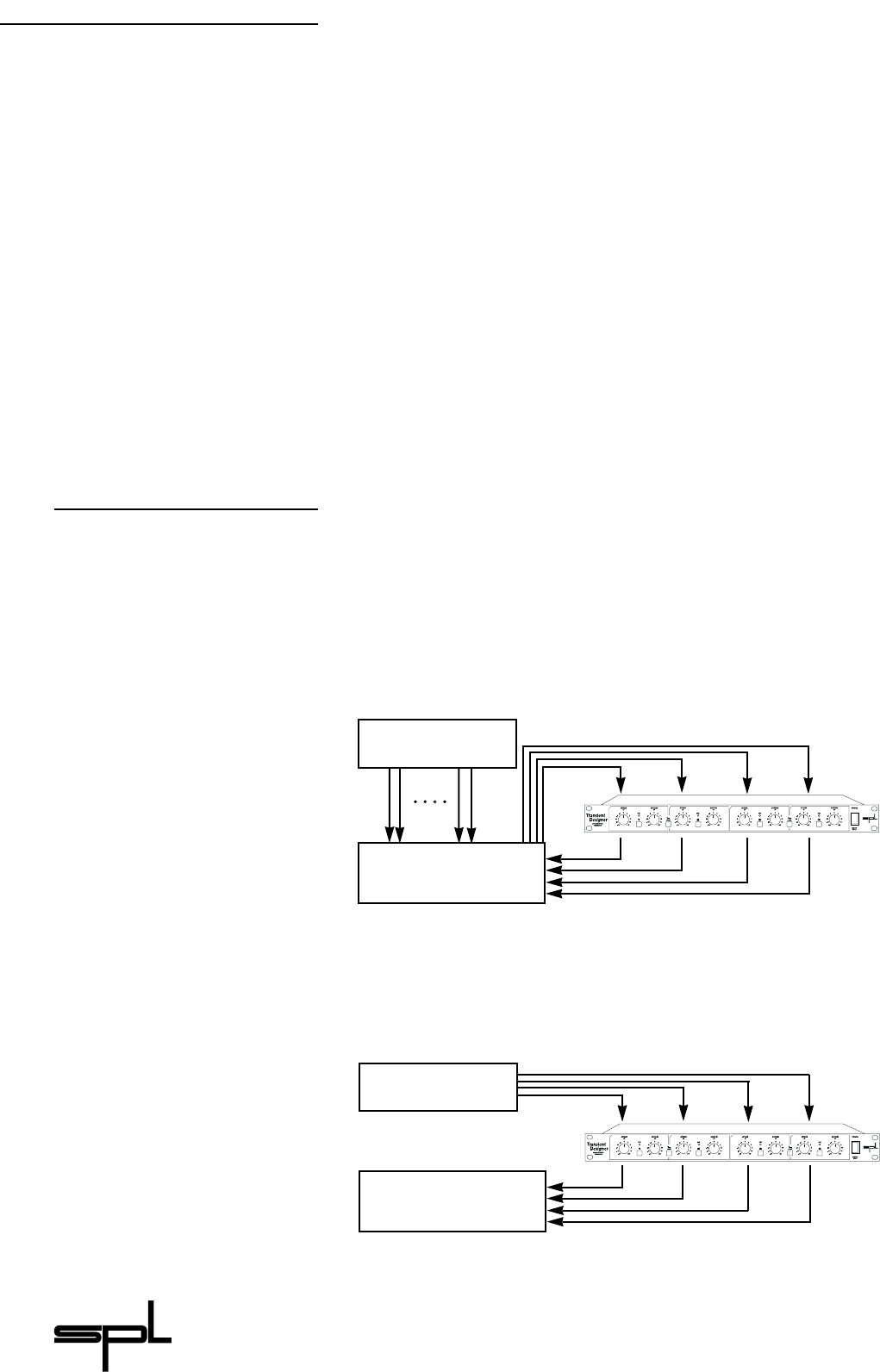
Transient Designer
12
The TRANSIENT DESIGNER is ideally suited for use in professional
recording,in project or home studios and P.A.applications.
For the first time the T
RANSIENT DESIGNER provides the technology
to manipulate the attack and sustain characteristics of a signal
regardless of level, and using simple controls. Usually equalisers
are used to separate instruments in a mix – the tonal aspect of the
signal is considered, but not the temporal aspect. By accelerating
the transients or/and shortening the sustain of an instrument,the
mix can be made to sound more transparent. Instruments can be
mixed at lower levels, still maintaining their positions in the mix,
but occupying less space.
'Front/rear-positioning' of drums or other percussive instru-
ments can effectively be 're-miked' during the mix – at least,that's
the subjective effect. Applied to single instruments or loops, this
technology creates new sounds or adds weight and authority to
existing sounds.
There are several ways to connect the T
RANSIENT DESIGNER to your
equipment. One of the most flexible options is wiring the
T
RANSIENT DESIGNER to a patchbay, and if your console has swit-
chable insert points to prevent audio running through the
patchbay when not required,so much the better.
Alternatively, the T
RANSIENT DESIGNER may be connected directly
to the channel or subgroup inserts.
The T
RANSIENT DESIGNER may also be connected directly to the
output stages of drum machines or samplers,if no suitable inserts
are available, though it should not be connected via an effects
aux send/return loop.
Diagram 7
Connecting the T
RANSIENT
DESIGNER to the channel inserts
of the mixer for processing
different tracks.
Diagram 8
Direct wiring between
sampler or drum machine
and mixer.
Channel or Subgroup Insert Sends
Channel or Subgroup Insert Returns
Multi-Track
Mixer
Sampler Output
T
RANSIENT DESIGNER Output to Mixer
Sampler
Mixer
Applications
Connections


















